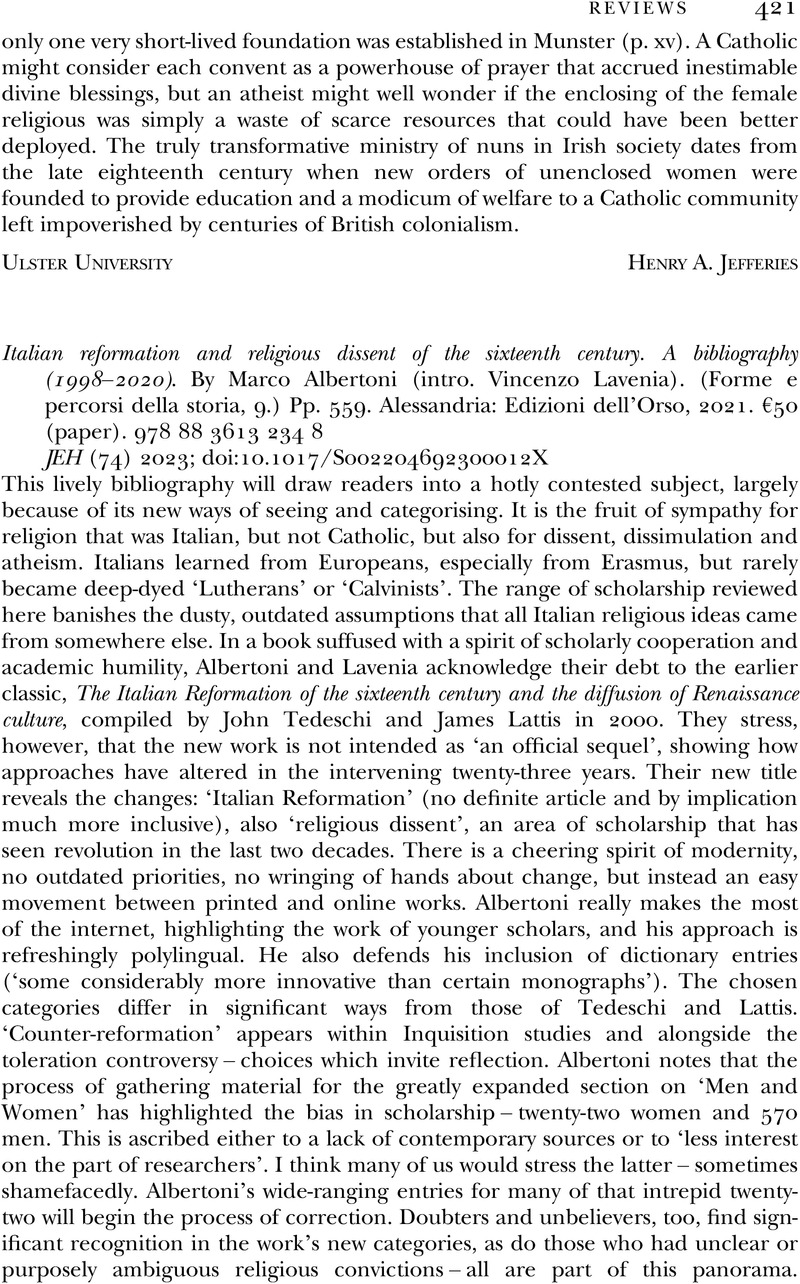No CrossRef data available.
Article contents
Italian reformation and religious dissent of the sixteenth century. A bibliography (1998–2020). By Marco Albertoni (intro. Vincenzo Lavenia). (Forme e percorsi della storia, 9.) Pp. 559. Alessandria: Edizioni dell'Orso, 2021. €50 (paper). 978 88 3613 234 8
Review products
Italian reformation and religious dissent of the sixteenth century. A bibliography (1998–2020). By Marco Albertoni (intro. Vincenzo Lavenia). (Forme e percorsi della storia, 9.) Pp. 559. Alessandria: Edizioni dell'Orso, 2021. €50 (paper). 978 88 3613 234 8
Published online by Cambridge University Press: 25 April 2023
Abstract
An abstract is not available for this content so a preview has been provided. Please use the Get access link above for information on how to access this content.

- Type
- Reviews
- Information
- Copyright
- Copyright © Cambridge University Press 2023



